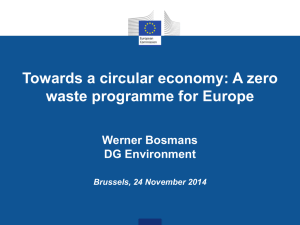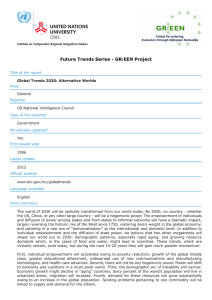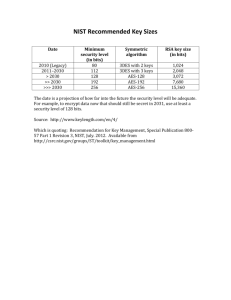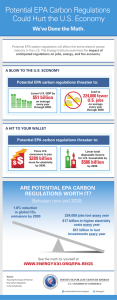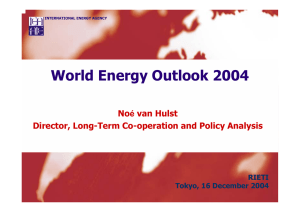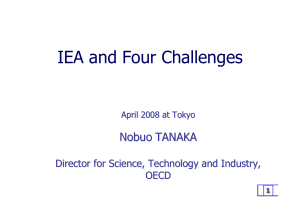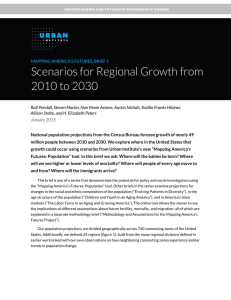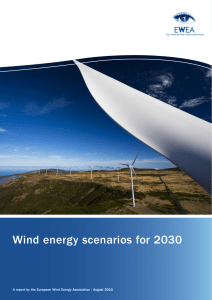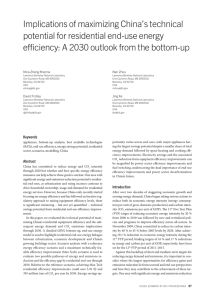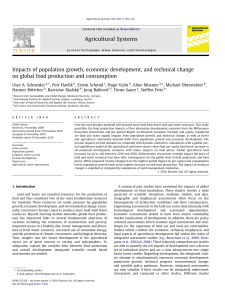Future Trends Series - GR:EEN Project
advertisement
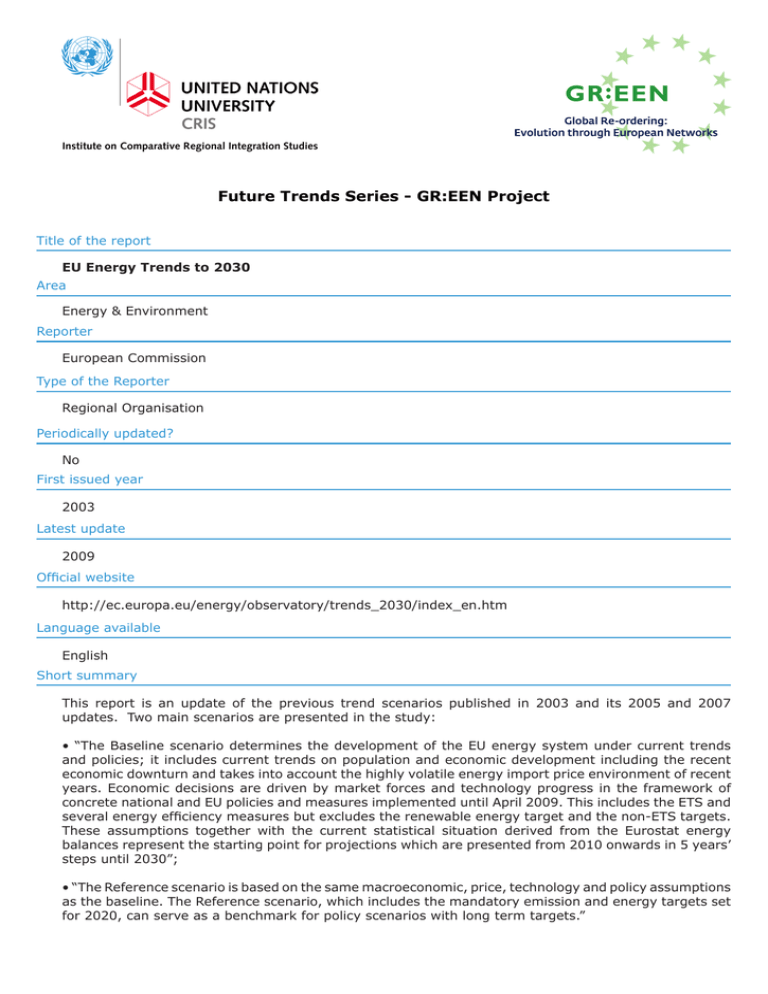
Future Trends Series - GR:EEN Project Title of the report EU Energy Trends to 2030 Area Energy & Environment Reporter European Commission Type of the Reporter Regional Organisation Periodically updated? No First issued year 2003 Latest update 2009 Official website http://ec.europa.eu/energy/observatory/trends_2030/index_en.htm Language available English Short summary This report is an update of the previous trend scenarios published in 2003 and its 2005 and 2007 updates. Two main scenarios are presented in the study: • “The Baseline scenario determines the development of the EU energy system under current trends and policies; it includes current trends on population and economic development including the recent economic downturn and takes into account the highly volatile energy import price environment of recent years. Economic decisions are driven by market forces and technology progress in the framework of concrete national and EU policies and measures implemented until April 2009. This includes the ETS and several energy efficiency measures but excludes the renewable energy target and the non-ETS targets. These assumptions together with the current statistical situation derived from the Eurostat energy balances represent the starting point for projections which are presented from 2010 onwards in 5 years’ steps until 2030”; • “The Reference scenario is based on the same macroeconomic, price, technology and policy assumptions as the baseline. The Reference scenario, which includes the mandatory emission and energy targets set for 2020, can serve as a benchmark for policy scenarios with long term targets.” Key trends • “Growth prospects of the EU are in percentage terms somewhat larger than before the crisis, albeit for a limited time period. Based on this logic, the projection displays higher growth rates compared to a similar projection carried out before the crisis. Despite this, a permanent loss of GDP and welfare is encountered when considering the entire period from 2008 to 2030”; • “In the longer term, the EU GDP growth is projected to slow down to 1.7% per year between 2020 and 2030”; • “Decrease in primary energy consumption and a decrease in the use of fossil fuels which has a positive effect on security of supply reducing the necessity of imports from outside the EU including from geopolitical unstable regions”; • “The services sectors are projected to dominate the EU’s GDP throughout the projection period. The services contribute 72% of gross value added in the EU in 2005 and are projected to contribute 74.7% of the total by 2030”; • “Non energy intensive industries display the second fastest rate of growth among the sectors and their share is projected to remain around 13.5% throughout the projection period.” • “The engineering industry, producing equipment goods, is the dominant industry within the non energy intensive industrial sec-tor, growing faster than the average. Pharmaceuticals and cosmetics display high growth in the scenario but their share re-mains rather low. Food, drink and tobacco and other industries like wood, rubber and plastics, show significant dynamism, contrasting textiles which are projected to decline”; • “The energy intensive industry (chemicals, basic metals, construction materials, pulp and paper) represent a small share in total value added (3.4% in 2005). The scenario assumes that the bulk of industrial activity in this sector will stay in the EU territory and will even display a slow but steady growth (0.7% per year between 2005 and 2030). However the share of this industry will slightly decline, reaching 2.65% by 2030.” Suggestions / Methodology Research from primary sources and modelling Reference to other trends reports? If yes, which reports? /
